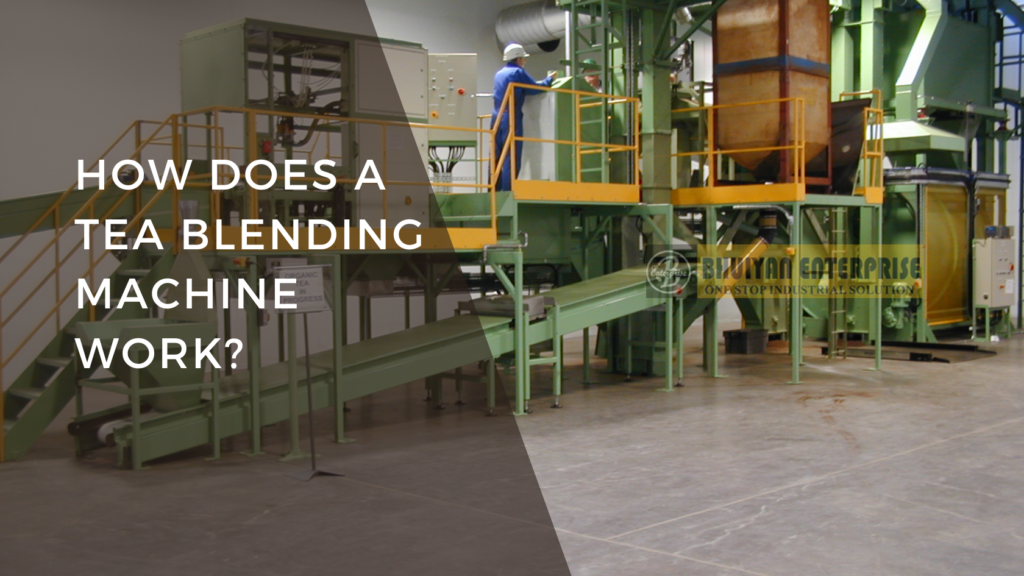
Have you ever wondered how your favorite tea blends achieve such consistent flavor and quality? If you’re a tea lover or in the tea business, understanding the mechanics behind tea blending is essential. So, how does a tea blending machine work? In this article, we’ll explore the fascinating process of tea blending, the types of machines used, and the key features that make these machines indispensable for producing high-quality loose leaf teas and other blends of teas.
What is a Tea Blending Machine?
Definition of a Tea Blending Machine
A tea blending machine is a specialized piece of equipment designed to mix different types of tea leaves and herbs to create a uniform blend. These machines are essential for producing consistent tea blends, whether you’re dealing with loose leaf teas or granular products.
Purpose of a Tea Blending Machine
The primary purpose of a tea blending machine is to ensure that each batch of tea has a consistent flavor profile and quality. This is crucial for tea manufacturers who need to maintain the same taste and aroma across multiple production batches.
The Process of Tea Blending
Selection of Tea Leaves and Herbs
The process begins with the selection of the best quality tea leaves and herbs. Master blenders choose the right ingredients to achieve the desired flavor and aroma.
Preparation of the Ingredients
Ingredients are carefully measured and prepared, often using mason jars for small batches. This preparation ensures that the blend will be consistent.
Loading the Machine
The prepared ingredients are loaded into the tea blending machine. The machine manufacturers design these machines to handle various types of tea, from delicate withered leaves to more robust, granular products.
Blending Process
During the automatic blending cycle, the machine mixes the ingredients thoroughly. The mixing blades and air circulation system ensure that the tea leaves and herbs are evenly distributed, resulting in a stronger flavor and uniform blend.
Mixing Different Batches
To achieve a stronger batch, multiple smaller batches may be mixed together. This process helps in maintaining the desired flavor intensity.
Types of Tea Blending Machines
Batch Blending Machines
These machines blend tea in discrete batches, making them ideal for producing consistent small to medium-sized quantities.
Continuous Blending Machines
Continuous blending machines are used for large-scale production, allowing for a continuous feed of ingredients and a consistent output.
Free-Fall Processing Machines
These machines rely on gravity to mix the tea leaves and are particularly gentle, preserving the integrity of delicate leaves.
Other Types of Tea Blending Machines
There are various other specialized machines designed for specific blending needs, such as those for cold brew coffee or granular products.
Key Features and Components of Tea Blending Machines
Blending Chamber
The blending chamber is where the magic happens. It’s designed to mix the ingredients evenly without damaging them.
Control Panel
The control panel allows operators to set and monitor the blending process, ensuring precise control over the blend.
Mixing Blades
Mixing blades are crucial for achieving a homogeneous mix. They vary in design depending on the type of tea being blended.
Air Circulation System
An air circulation system helps to keep the ingredients moving and prevents clumping, ensuring a uniform blend.
Temperature and Humidity Control
These controls are essential for maintaining the quality of the tea, especially for blends that are sensitive to environmental conditions.
Common Challenges and Solutions in Tea Blending Machines
Quality Control Issues
Consistent quality can be challenging, but regular calibration and maintenance can help.
Cleaning and Maintenance
Regular cleaning is essential to prevent contamination and maintain the machine’s efficiency.
Machine Breakdowns
Having a maintenance plan and quick access to replacement parts can minimize downtime.
Variations in Blend Consistency
Using precise measurements and maintaining a controlled environment can reduce variability.
Benefits of Using Tea Blending Machines
Consistent Flavor Profiles
Tea blending machines ensure that each batch of tea has the same great taste, which is crucial for brand reputation.
Increased Production Efficiency
Automation speeds up the blending process, allowing for higher production rates without sacrificing quality.
Cost Savings and Scalability
Machines can handle large volumes, reducing labor costs and allowing for scalability as demand grows.
Conclusion
Understanding how a tea blending machine works can help you appreciate the intricate process that goes into every cup of tea. Whether you’re a tea lover or in the business, knowing the mechanics behind tea blending can enhance your appreciation and improve your product quality. So, next time you enjoy a perfect cup of tea, you’ll know exactly how a tea blending machine works to create that delightful experience.
FAQs about How Does a Tea Blending Machine Work?
How does a tea blending machine work?
Answer: A tea blending machine works by combining various tea leaves and herbs in a blending chamber, using mixing blades and an air circulation system to ensure a uniform blend.
What types of tea blending machines are there?
Answer: There are batch blending machines, continuous blending machines, and free-fall processing machines, each designed for different production needs and types of tea.
What are the key components of a tea blending machine?
Answer: Key components include the blending chamber, control panel, mixing blades, air circulation system, and temperature and humidity control systems.
What are the benefits of using a tea blending machine?
Answer: Benefits include consistent flavor profiles, increased production efficiency, cost savings, and scalability.
What challenges can arise with tea blending machines?
Answer: Common challenges include quality control issues, cleaning and maintenance needs, machine breakdowns, and variations in blend consistency.

